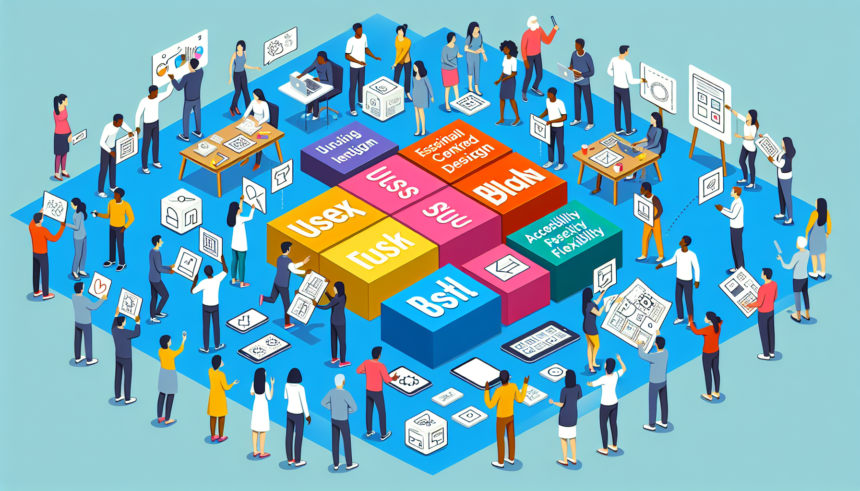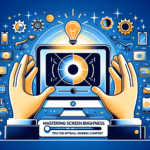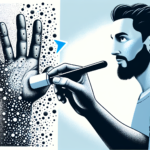Introduction
User-Centered Design (UCD) is a holistic and iterative process in which developers and designers focus on users and their needs throughout the development of a product. The primary goal here is to enhance user satisfaction by improving the usability, accessibility, and overall user interaction with the product. This guide breaks down the core building blocks of UCD, providing a comprehensive look at how to effectively implement this approach in a project.
Understanding User-Centered Design
Before diving into the building blocks, it’s important to understand that UCD is a multi-stage problem-solving process requiring designers to investigate and validate the requirements of users. Unlike traditional design processes, UCD prioritizes users at every phase — from initial research to final testing and validation.
1. User Research
User research is the cornerstone of UCD. It involves gathering data about user needs, preferences, and behaviors through various methods, such as surveys, interviews, and usability tests. This data informs every subsequent step in the design process.
Methods of User Research
- Surveys and Questionaries: Collect quantitative data on user preferences and experiences.
- Interviews: Gain in-depth insights through one-on-one interactions.
- Usability Testing: Observe how users interact with a product and identify pain points.
- Focus Groups: Gather feedback from a small group of users representing the broader audience.
2. Requirements Analysis
Requirements analysis involves translating the insights gained from user research into actionable design requirements. This step ensures that the design aligns with user needs and expectations.
Defining User Personas
Based on the collected data, designers create user personas — fictional characters representing different user types. These personas help guide design decisions by providing a clear picture of the target audience.
3. Design Process
The design process in UCD is highly iterative and collaborative. It involves creating sketches, wireframes, prototypes, and eventually the final design.
Sketching and Wireframing
Sketches and wireframes are initial visual representations of the product. They help designers explore different layouts, structures, and functionalities without delving into the intricacies of design elements.
Prototyping
Prototypes are more detailed representations of the product. They can be low-fidelity (paper prototypes) or high-fidelity (interactive digital prototypes). Prototyping allows designers to test ideas and gather user feedback early in the process.
Usability Testing
Usability testing is a critical part of the design process. It involves evaluating a product by testing it with real users. This step helps identify usability issues and refine the design based on user feedback.
4. Implementation
The implementation phase involves turning the validated design into a functional product. Collaboration between designers, developers, and other stakeholders is crucial to ensure that the final product meets user expectations.
Agile Development
The Agile methodology is often used in UCD projects. It promotes iterative development, allowing teams to respond quickly to changes and incorporate feedback from ongoing usability testing.
5. Evaluation and Iteration
Evaluation is not a one-time activity in UCD. Continuous monitoring and feedback are essential to ensure that the product remains effective and user-friendly throughout its lifecycle.
Continuous Improvement
Regularly gathering user feedback and making necessary improvements helps maintain a high level of user satisfaction. Iteration cycles ensure that the product evolves based on changing user needs and technological advancements.
Conclusion
User-Centered Design is a powerful approach that places users at the heart of the design process. By understanding and addressing user needs, preferences, and behaviors, designers can create products that offer meaningful and engaging experiences. The building blocks of UCD — user research, requirements analysis, design process, implementation, and evaluation — work together to ensure that the final product is not only functional but also intuitive and enjoyable to use. As technology evolves and user expectations shift, adhering to the principles of UCD will remain crucial for creating successful and user-friendly products.
FAQs
1. What is User-Centered Design?
User-Centered Design (UCD) is a design philosophy and process focused on creating products that meet the needs, preferences, and behaviors of the end-users. It involves users at every stage of the design process, from initial research to final evaluation.
2. Why is user research important in UCD?
User research is essential in UCD because it provides valuable insights into user needs and behaviors. These insights guide the entire design process, ensuring that the final product is tailored to the target audience’s requirements.
3. How do user personas help in the design process?
User personas are fictional representations of different user types based on research data. They help designers make informed design decisions by providing a clear picture of the target audience and their needs.
4. What is the role of prototyping in UCD?
Prototyping is crucial in UCD as it allows designers to test and validate design ideas early in the process. By creating low- or high-fidelity prototypes, designers can gather user feedback and make necessary adjustments before final implementation.
5. How does the Agile methodology benefit UCD projects?
The Agile methodology promotes iterative development and continuous feedback, making it well-suited for UCD projects. It allows teams to quickly respond to changes and incorporate user feedback, ensuring that the final product aligns with user needs and expectations.










